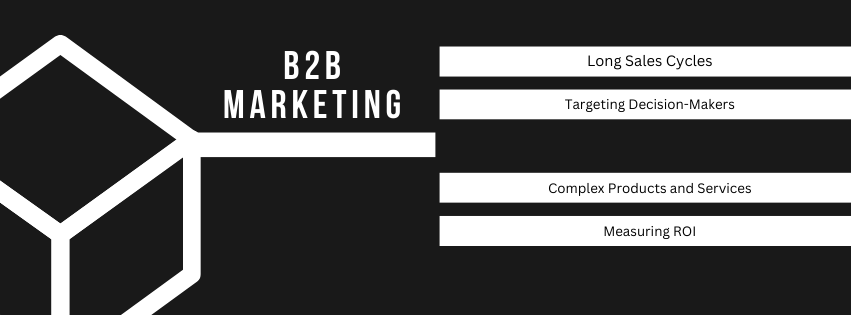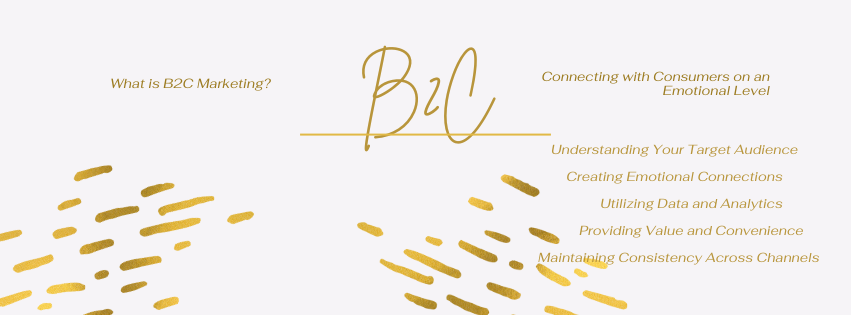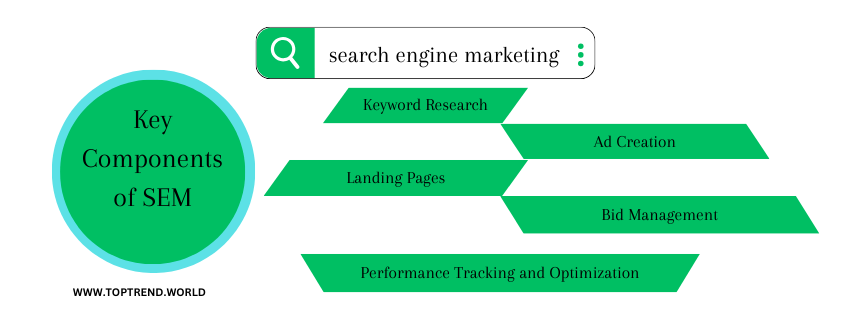B2B marketing (business-to-business marketing) focuses on promoting products or services to other businesses rather than individual consumers.
Unlike B2C (business-to-consumer) marketing, where the goal is to appeal to individual buyers’ emotions and desires, B2B marketing targets decision-makers within businesses and emphasizes logic, value, and ROI (return on investment).
The goal of B2B marketing is to build long-term relationships with clients and drive repeat business by providing solutions that help other companies achieve their goals.
In this blog, we will explore what B2B marketing is, its strategies, challenges, and key components for a successful B2B campaign.

What is B2B Marketing?
B2B marketing involves businesses selling products, services, or solutions to other companies.
These businesses can range from small startups to large enterprises, and the products can vary from raw materials to specialized software solutions.
In B2B transactions, purchases tend to be driven by data, detailed information, and long-term benefits rather than impulse or emotional buying.
The sales cycle is typically longer, and the decision-making process often involves multiple stakeholders.
Key Differences Between B2B and B2C Marketing
Target Audience
- B2B: Targets companies, decision-makers, and other professionals.
- B2C: Targets individual consumers and end-users.
Buying Process
- B2B: Longer sales cycles, multiple stakeholders, and decisions based on logic, data, and ROI.
- B2C: Shorter sales cycles, often involving emotional appeal and impulse decisions.
Relationship Focus
- B2B: Long-term relationships and ongoing collaboration are crucial.
- B2C: Focus is on creating quick, one-time sales or short-term customer loyalty.
Content
- B2B: Focuses on informative, detailed, and technical content that highlights the benefits, features, and ROI of a product or service.
- B2C: Content often emphasizes the emotional and personal benefits of a product.
Price Points
- B2B: Higher price points, contracts, and recurring transactions.
- B2C: Lower price points and individual purchases.
Key Strategies in B2B Marketing
Content Marketing
- Content marketing is a critical component of B2B marketing, as businesses rely on research and information before making purchasing decisions. Educational content such as blogs, white papers, case studies, eBooks, and webinars provide value to potential clients while positioning your business as an expert in the industry.
- Example: A cloud computing provider might produce white papers detailing how its solutions increase data security and reduce costs for enterprises.
Account-Based Marketing (ABM)
- ABM is a highly targeted B2B strategy that focuses on identifying and engaging high-value accounts with personalized marketing efforts. Instead of broad outreach, ABM tailors content, advertising, and outreach to the specific needs of key target accounts.
- Example: A software company might create personalized demos, custom proposals, and targeted ads for a particular prospect, tailoring each touchpoint to that company’s unique challenges.
Email Marketing
- Email remains a powerful tool for B2B marketers to nurture leads and stay in touch with clients. Personalized email campaigns with tailored content help guide potential customers through the sales funnel by addressing their specific needs and pain points.
- Example: An industrial machinery provider might send a monthly newsletter offering insights into industry trends and product updates, along with special offers for long-term clients.
LinkedIn Marketing
- LinkedIn is the top social media platform for B2B marketing, offering a professional space to build relationships, share thought leadership content, and advertise to specific industries. LinkedIn allows B2B marketers to engage directly with decision-makers and influencers within businesses.
- Example: A marketing agency might share case studies, customer success stories, or run sponsored LinkedIn ads that target marketing directors or CMOs in specific industries.
Search Engine Optimization (SEO) and SEM
- SEO is essential in B2B marketing, where research often begins with a search engine. Optimizing your website and content to rank high in search engine results increases visibility and drives organic traffic from potential business clients. SEM (Search Engine Marketing) further amplifies visibility through paid search ads.
- Example: A cybersecurity firm could focus on ranking high for keywords like “enterprise security solutions” or “cyber defense software” while running paid search ads targeting IT decision-makers.
Webinars and Virtual Events
- Webinars provide an opportunity for B2B companies to demonstrate expertise, share industry insights, and interact directly with prospects in real time. Hosting webinars on relevant topics allows businesses to engage with a targeted audience and generate qualified leads.
- Example: A SaaS company might host a webinar on “Improving Efficiency with Automation Tools” to attract potential clients interested in software solutions.
Trade Shows and Conferences
- Although digital marketing is essential, traditional trade shows and industry conferences still hold value for B2B marketing. These events provide businesses the opportunity to showcase their products, network with potential clients, and establish partnerships within the industry.
- Example: An engineering firm might exhibit at a manufacturing expo, allowing them to demonstrate their new technologies to key decision-makers in the industry.
Influencer and Partner Marketing
- In B2B, working with industry influencers or strategic partners can enhance credibility and expand reach. Influencers in B2B typically consist of thought leaders, industry experts, or companies with complementary services.
- Example: A logistics software company might partner with a well-known transportation provider to co-promote solutions that benefit both parties’ customers.
Challenges in B2B Marketing
Long Sales Cycles
The decision-making process in B2B is complex and involves multiple stakeholders, making the sales cycle longer.
It can take months (or even years) to close a deal, requiring patience, relationship-building, and a focus on lead nurturing.
Targeting Decision-Makers
Identifying the right decision-makers within an organization can be a challenge.
Unlike B2C marketing, where a single consumer makes the purchase, B2B marketers often have to convince an entire team or department.
Complex Products and Services
B2B products or services are often highly technical or complex, requiring detailed explanations, demonstrations, and proof of value.
Creating content that communicates these complexities in a simple, digestible way is key to educating prospects.
Measuring ROI
Measuring the ROI of B2B marketing efforts can be difficult due to the long sales cycle and multiple touchpoints.
Marketing teams need to track multiple metrics over an extended period to get a clear picture of what’s working and what’s not.
Key Components of a Successful B2B Marketing Campaign
Understanding the Buyer’s Journey
Mapping out the buyer’s journey from the awareness stage to the decision stage is critical in B2B marketing.
By understanding the questions, challenges, and needs of buyers at each stage, marketers can create content and strategies that guide prospects through the funnel.
Building Trust and Credibility
Trust is a crucial factor in B2B marketing. Businesses need to feel confident that your product or service will deliver the promised results.
Sharing case studies, client testimonials, and industry certifications can help build credibility.
Leveraging Data and Analytics
Data is essential in B2B marketing to understand the effectiveness of campaigns and make informed decisions.
Tracking website traffic, lead sources, email engagement, and sales conversions helps marketers refine their strategies and improve ROI.
Providing a Seamless Experience
A smooth user experience—whether on your website, during a demo, or through customer support—is crucial for B2B companies.
Prospects should be able to access relevant information easily, and your sales process should be professional and efficient.
Examples of Successful B2B Marketing Campaigns
HubSpot’s Inbound Marketing Strategy
HubSpot revolutionized B2B marketing with its inbound marketing strategy.
The company produces a vast amount of educational content, from blog posts to free tools and webinars, driving massive traffic to its website and converting visitors into leads through value-driven resources.
Slack’s Word-of-Mouth Strategy
Slack, a popular communication tool for businesses, grew rapidly by leveraging word-of-mouth marketing and offering a product that provided immediate value.
By offering a free version and creating a highly usable, engaging product, Slack quickly gained traction among teams, leading to widespread adoption in the B2B space.
IBM’s Thought Leadership Content
IBM focuses heavily on thought leadership content to position itself as a leader in the technology industry.
Through white papers, research reports, and webinars, IBM educates its audience on emerging trends and challenges while showcasing its solutions.
Conclusion
B2B marketing is all about building strong relationships, providing value, and solving the unique challenges businesses face.
The strategies used in B2B marketing—from content marketing to account-based marketing—are designed to educate, engage, and convert businesses over a longer sales cycle.
By understanding the complexities of the B2B buying process, leveraging data, and creating value-driven content, businesses can develop successful B2B marketing campaigns that drive growth, build trust, and ultimately, lead to long-term partnerships.




